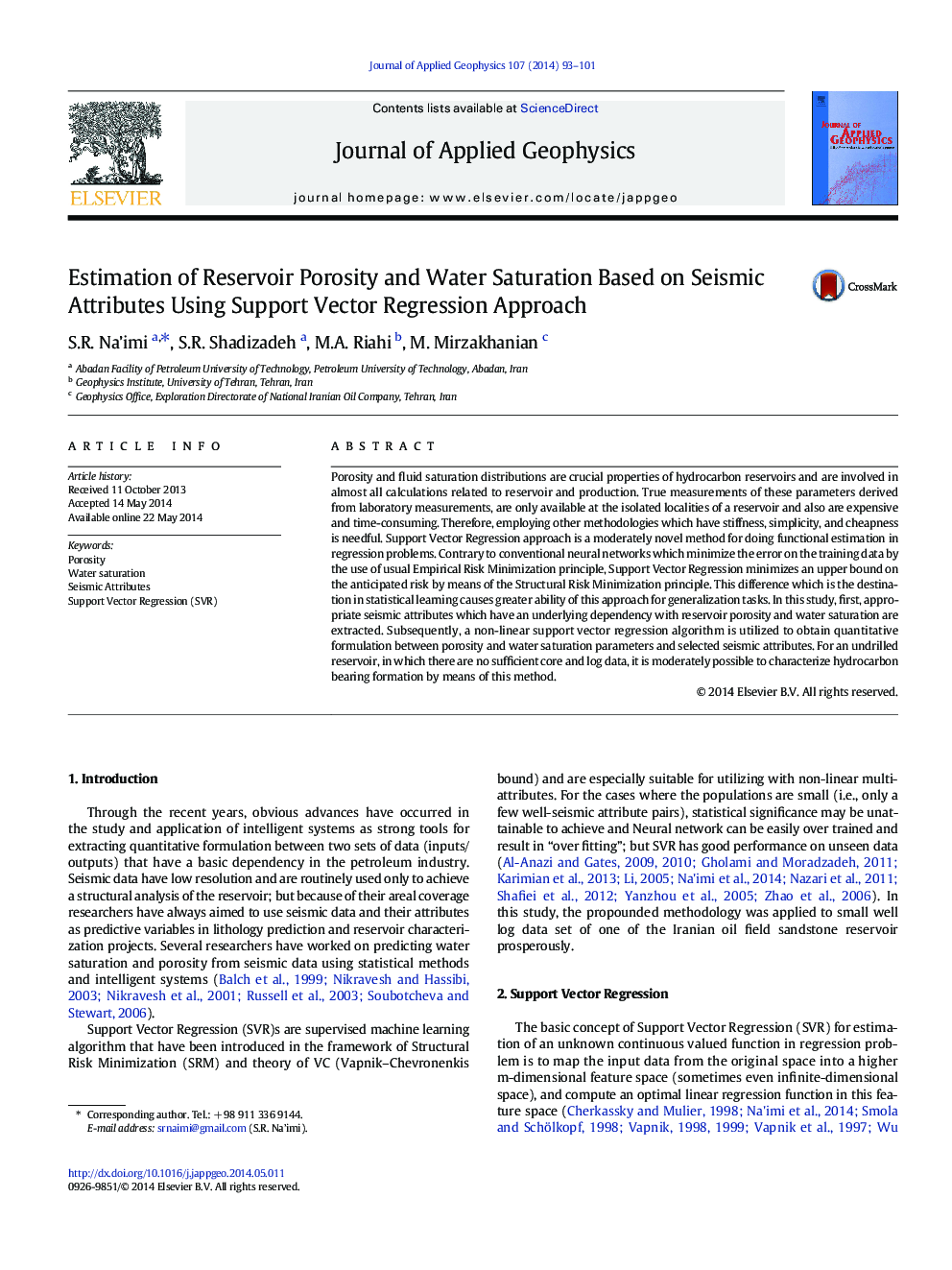| Article ID | Journal | Published Year | Pages | File Type |
|---|---|---|---|---|
| 6447279 | Journal of Applied Geophysics | 2014 | 9 Pages |
Abstract
Porosity and fluid saturation distributions are crucial properties of hydrocarbon reservoirs and are involved in almost all calculations related to reservoir and production. True measurements of these parameters derived from laboratory measurements, are only available at the isolated localities of a reservoir and also are expensive and time-consuming. Therefore, employing other methodologies which have stiffness, simplicity, and cheapness is needful. Support Vector Regression approach is a moderately novel method for doing functional estimation in regression problems. Contrary to conventional neural networks which minimize the error on the training data by the use of usual Empirical Risk Minimization principle, Support Vector Regression minimizes an upper bound on the anticipated risk by means of the Structural Risk Minimization principle. This difference which is the destination in statistical learning causes greater ability of this approach for generalization tasks. In this study, first, appropriate seismic attributes which have an underlying dependency with reservoir porosity and water saturation are extracted. Subsequently, a non-linear support vector regression algorithm is utilized to obtain quantitative formulation between porosity and water saturation parameters and selected seismic attributes. For an undrilled reservoir, in which there are no sufficient core and log data, it is moderately possible to characterize hydrocarbon bearing formation by means of this method.
Related Topics
Physical Sciences and Engineering
Earth and Planetary Sciences
Geophysics
Authors
S.R. Na'imi, S.R. Shadizadeh, M.A. Riahi, M. Mirzakhanian,
